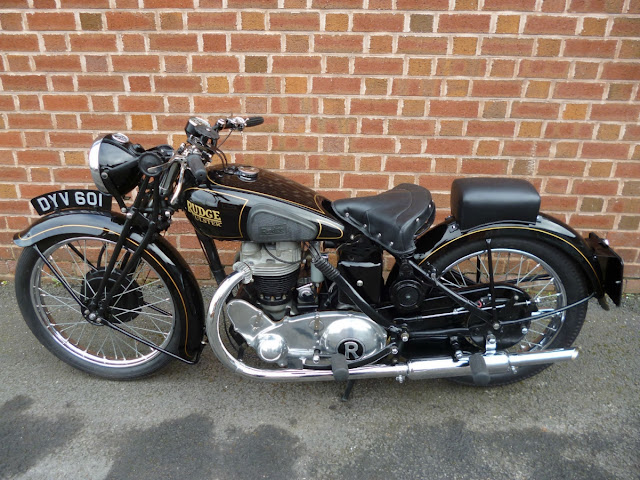Rudge Ulster
The heart of the production Ulster model was its powerful and refined four-valve single engine, which was developed from Rudge’s successful racing machines of the early 1930s.
This Ulster dates from 1935 and features a hand-operated gearchange, as well as Rudge's innovative brake system. This linked the front and rear drums, in the style of some modern disc systems, and was highly regarded by many riders.
Rudge will long be remembered for its four-valve singles, and most of all for the succession of 500cc Ulster models that were the Coventry firm’s flagship sportsters throughout the 1930s. The name came from the Ulster Grand Prix where, in 1928, Rudge factory ace Graham Walker had won a famous victory on a new bike whose engine featured four valves per cylinder, grouped round a central spark plug.
Walker’s win at that event in Northern Ireland was the first ever in a road race at an average speed of over 80mph (129km/h). The victory was a perfect marketing opportunity for Rudge, whose policy was to adapt successful racing innovations to the following year’s production machines. In 1929 the firm launched a four-valve single with the Ulster name, after receiving a further boost when Ernie Nott raised the world two-hour record to an average speed of just over 1 OOmph (161 km/h), including stops for refuelling.
Rudge followed this with a second-generation engine that arranged its four valves radially, and was even more powerful. This layout made a stunning debut in 1930, when Rudge took the first three places in the Isle of Man Junior TT.
Subsequently the production Ulster model had a semi-radial valve layout, and was good for over 90mph (145km/h). Rudge also produced a 500 Special whose four valves were arranged in pairs rather than radially. It was less powerful than the Ulster, but cheaper and easier to maintain. There was more to the Rudge Ulster than its engine, too. The model was one of the first to be fitted with a four-speed gearbox, and also featured Rudge’s innovative linked brake system. The foot- pedal operated both front and rear drums, with the hand lever also working the front brake.
Sporting success
The Ulster was by no means the first fast Rudge. The firm whose full name was Rudge-Whitworth had been created in 1894, when Whitworth Cycles acquired Rudge, another bicycle firm, and had built its first motorcycle in 1911. Sporting success came when Victor Surridge lapped Surrey’s Brooklands track at 66.47mph (106.97km/h), a 500cc record. In 1914, Rudge’s Cyril Pullin won the Isle of Man Senior TT at an impressive average speed of almost 50mph (80km/h).
Rudge’s first landmark model was the Multi of 1912, which was named after its novel system of gears. The Multi used a pulley arrangement to maintain the tension of the final drive belt, allowing the rider to select from no fewer than 21 gear ratios using a long lever. In 1919 the firm introduced a 998cc V-twin, which was also available with the Multi gear system, and was then called the Multwin.
Unfortunately for Rudge, its racing success and the Ulster’s roadgoing performance were not enough to make the firm profitable during the recession-hit 1930s. Rudge tried selling engines under the Python label, but in 1933 the receiver was called in and the racing department was closed. Production continued but Rudge’s best days were over, and the firm would not survive the War.
Triumph Ricardo - Four-valve Pioneer
Rudge's four-valve engine layout owed much to the innovative Triumph Type R, designed by Harry Ricardo, which had been introduced in 1921. The 499cc single-cylinder engine featured four valves and a pentroof combustion chamber (the style still used by most modern bike motors), and produced an impressive 20hp. The Type R was good for over 80mph (129km/h), and set records including the world 500cc one-hour mark at 76.74mph (123.5km/h). But Triumph chose to concentrate production on a simpler two-valve single instead.
Specification Rudge Ulster
- Engine Air-cooled ohv pushrod four-valve single
- Capacity 499cc (85 x 88mm)
- Maximum power 30bhp @ 5200rpm
- Transmission Four-speed, chain final drive
- Frame Steel twin downtube
- Suspension Girder front; rigid rear
- Brakes Drum front and rear
- Weight 298lb (135kg)
- Top speed 93mph (150km/h)

















0 comments: